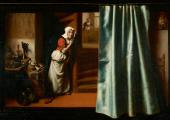Fanny Lye Deliver’d review - blistering English civil war western

Thomas Clay delivers a potent pastoral drama by way of a house-invasion horror
Ten years in the making, Thomas Clay’s third feature, starring Charles Dance and Maxine Peake, is a remarkable and potent example of genre-splicing British independent filmmaking.









